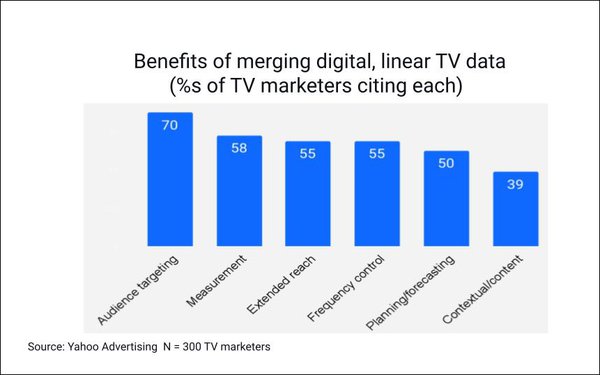
Advanced TV is transforming advertising with
personalization, optimization, advanced frequency controls to reduce waste, unified measurement capabilities, and the ability to adapt to consumers’ shifting, cross-screen consumption behaviors.
But increasingly, leveraging advanced TV’s emerging capabilities with cohesive strategies calls for integrating streaming/digital and addressable linear campaign data.
In
a recent survey of 300 agency and brand TV marketers by Yahoo Advertising, 70% cited audience targeting as a primary benefit of such data integration.
Measurement was the next most frequently
cited benefit (58%), followed by extended reach (55%), frequency control (55%), planning/forecasting (50%) and contextual/content (39%).
However, the marketers also agreed that there are
multiple challenges to integrating digital and addressable data — starting with lack of common metrics across channels, cited by 53%.
advertisement
advertisement
Others cited the challenges of creating a holistic
framework for planning and measurement (41%), data-sharing restrictions by walled gardens (40%), choosing the right partner (34%), limited internal resources (27%), and organizational silos (26%).
Other reasons cited for slowness in adopting advanced linear advertising include lack of transparency in impression delivery (34%) and high costs (34%).
Marketers often need help with
interoperability challenges and need partners and tech platforms to help them integrate and mesh data, metrics and audiences to optimize performance.
Nine out of 10 advertisers agreed that
managing linear and digital campaigns using a single omnichannel solution should be considered essential, according to Yahoo.